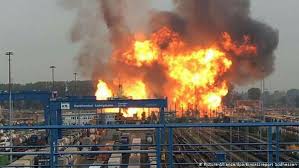With several industrial accidents in recent past highlighting gaps, the government is in the last leg of finalising the amendment to chemical accident rules to minimise disasters such as the one that happened at Visakhapatnam polymer factory on Thursday, killing at least 11 and hospitalising hundreds.
Following the 1984 Bhopal gas disaster, the Ministry of Environment and Forest (MoEF) notified two sets of rules - Manufacture, Storage and Import of Hazardous Chemicals (MSIHC) Rules, 1989 and Chemical Accidents (Emergency Planning, Preparedness, and Response), (CAEPPR) Rules, 1996 - to regulate the manufacturing, use, and handling of hazardous chemicals.
The objective of MSIHC Rules is to prevent major chemical accidents arising from industrial activities and limit the effects of chemical (industrial) accidents. The CAEPPR Rules provide the statutory back-up for Crisis Management.
In 2016, MoEF proposed to upgrade the rules to keep pace with the time. A draft amendment to rules that sought effective enforcement of regulations in the chemical industry, was floated for stakeholder consultation.
But the rules could not be finalised, officials with direct knowledge of the development said.
The amendment was referred to a committee that took a "lot of time" in finalising its recommendations, an official said.
In the meanwhile, the Department of Chemicals and Petrochemicals (DCPC) wanted some kind of power to regulate the usage of all chemicals incorporating best practices around the globe.
DCPC was keen on pre-use registration and inventory management, they said adding it is a kind of licensing.
MoEF, on the other hand, continued to be a nodal authority on the handling of hazardous chemicals.
The difference was resolved by allowing DCPC to frame regulations for chemicals, and hazardous chemicals would be one sub-set for which MoEF will assist in framing regulations.
A draft Cabinet note has been circulated and regulation would be in place after inter-ministerial discussion, they said.
"The rules should be out in a short time," an official said.
Similarly, the CAEPPR Rules, 1996 provide the statutory backup for crisis management set-up and prescribe criteria for identification of Major Accident Hazard (MAH) installations.
All districts with such installations are required to establish crisis management groups, it said.
In addition, as prescribed by the MSIHC Rules, 1989, the occupiers of the MAH units are responsible for the preparation of on-site Emergency Plans while the Chief Inspector of Factories (CIFs) in consultation with district authorities are required to prepare off-site emergency plans as well.
Source: PTI

